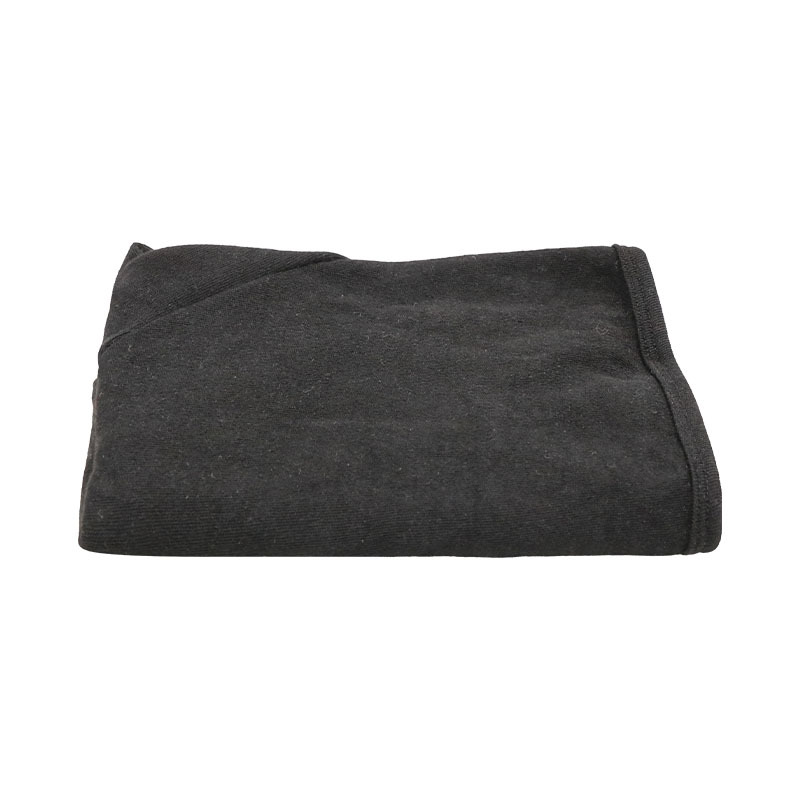Para-aramid 1313 black knitted fabric used in special protective equipment
Jul 10,2025

Para-aramid 1313 black knitted fabric
Durable high-temperature resistance
Long-term temperature resistance: Can be continuously used at 220℃, with low thermal shrinkage at 250℃, and does not soften or melt under short-term exposure to 300℃.
High-temperature stability: Starts to decompose at 370℃, carbonizes at 400℃, maintaining structural integrity and dimensional stability at high temperatures.
Flame retardancy
Limiting Oxygen Index (LOI) ≥28%, far exceeding the oxygen content in the air (21%), does not burn or melt when exposed to fire, and quickly carbonizes to form an insulating barrier (during sudden high temperatures of 900–1500℃). No toxic gases are released, meeting fire and industrial safety standards.
Excellent chemical stability
Resistant to high concentrations of inorganic acids (such as sulfuric acid, nitric acid), organic solvents, and weak alkali corrosion, resistant to hydrolysis and steam erosion, suitable for chemical and electroplating environments.
Excellent mechanical and comfort properties
High strength and flexibility: Tensile strength 0.4–0.53 N/tex, elongation 30–50%, wear-resistant and tear-resistant.
Knitted structure advantages: 220g medium-thick weight balances protection and flexibility, conforms to the body curve, breathable and moisture-permeable (moisture permeability ≥4000 g/m²·d), far superior to the stiffness of woven fabrics.
Application fields of Para-aramid 1313 knitted fabric
(1) Special protective equipment
Firefighting and high-temperature work clothing
Firefighting suit comfort layer: Made into an air layer knitted structure with cotton blends (such as 70% Para-aramid 1313 + 30% cotton), combining flame retardancy, moisture permeability, and activity flexibility.
Metallurgy/welding protection: The black surface layer is resistant to dirt and is used for gloves, headgear, and underwear, directly contacting high-temperature environments.
Defense and tactical equipment
Combat uniform lining: Infrared detection prevention (black light absorption), flame retardant, tear-resistant, used for flight suits and chemical protective suits.
Bulletproof equipment components: Used as a buffer layer to reduce blunt trauma and adapt to human activity needs.
(2) Industrial high-temperature scenarios
High-temperature filter materials
Dust removal filter bags: Composite with fiberglass (such as Para-aramid 1313 + alkali-free fiberglass), used for flue gas filtration in cement plants and steel plants (temperature resistant to 220℃, instantaneous 240℃).
Chemical corrosion environment: Resisting acid mist and metal dust erosion.
Sealing and heat insulation pads
Industrial equipment sealing: Adhered to ovens and pipe joints for fire prevention and shock absorption.
Electrical insulation layer: Motor and battery pack insulation pads, flame retardant and insulating.
(3) High-end composite and civil fields
Transportation interiors and safety materials
High-speed rail/aircraft seat fabrics: Black appearance enhances aesthetics and meets flame retardant standards.
Racing suits/racing car interior lining: Lightweight (density 1.33–1.36 g/cm³) and high protection.
Special home textiles and outdoor equipment
Flame-retardant home products: Fireproof curtains, escape blankets, kitchen anti-scalding pads.
High-end tents/climbing suits: Weather-resistant enhanced version for extreme environments.
Related Posts
Contact Us
E-mail:
gdkaidun@163.com
Phone/WeChat:
86-131-3828-6677
Address:
Room 401, Building 21, No. 1, Keqing Road, Yundonghai Street, Sanshui District, Foshan City, Guangdong Province





